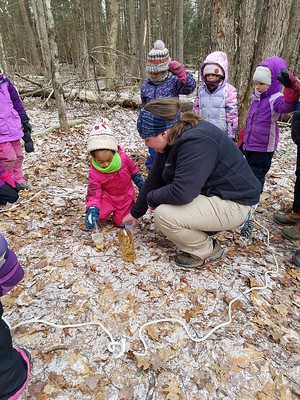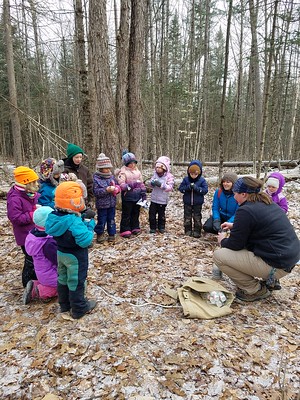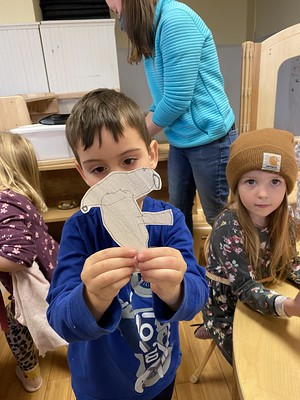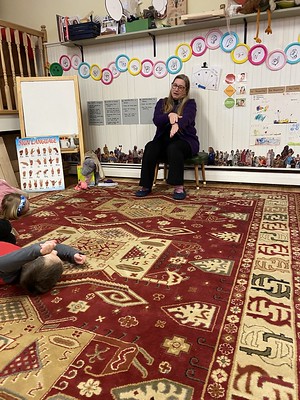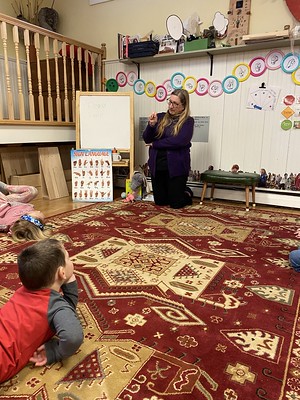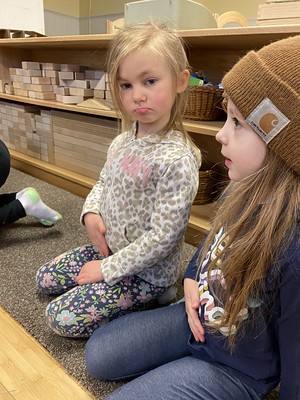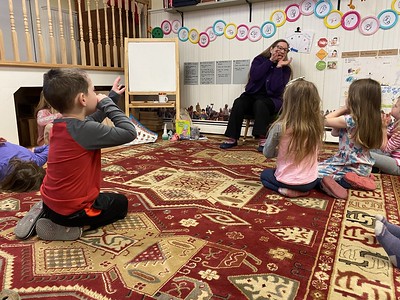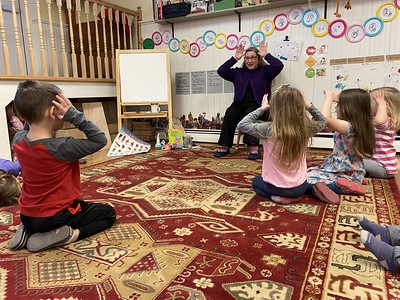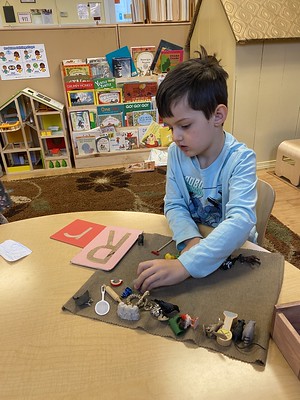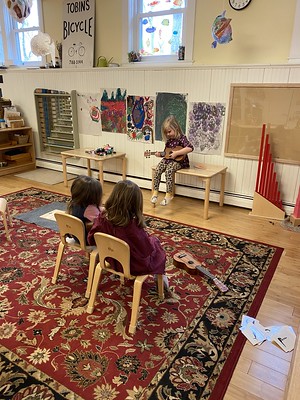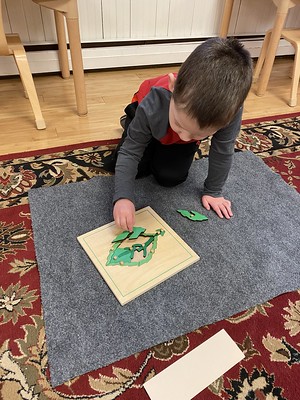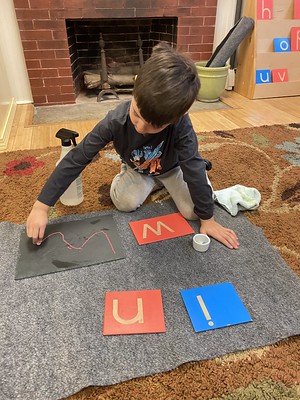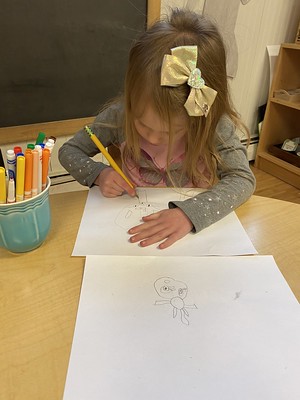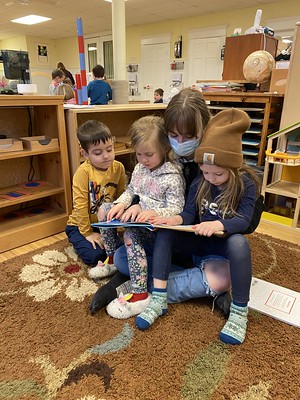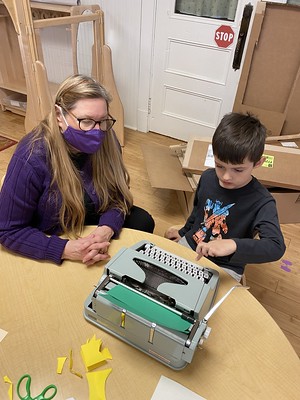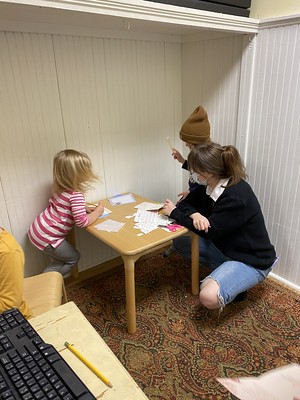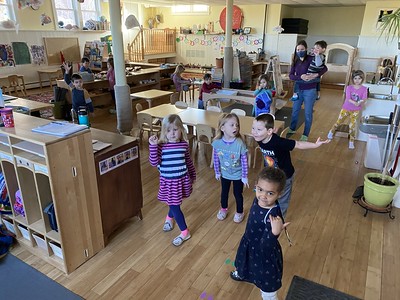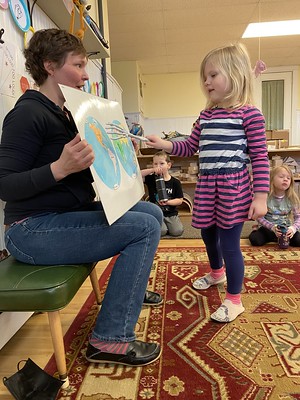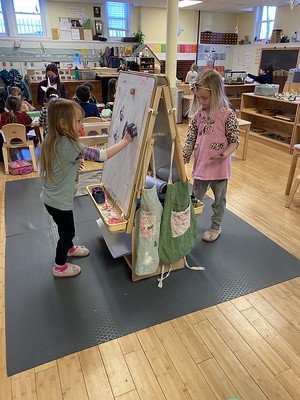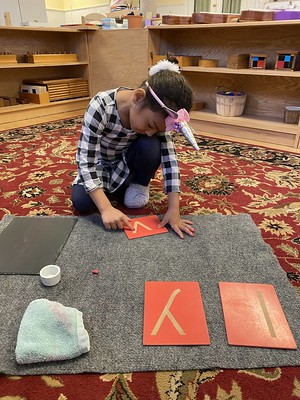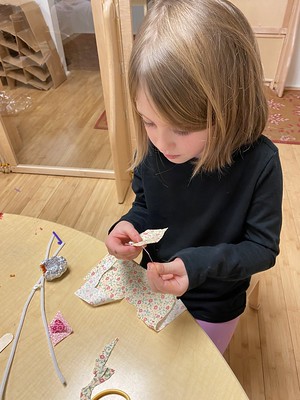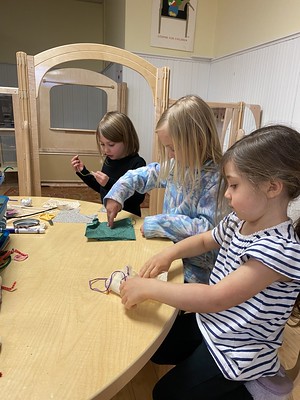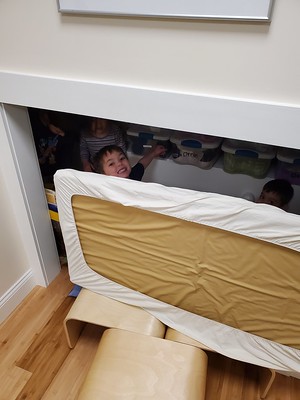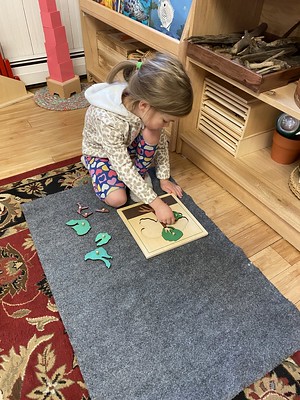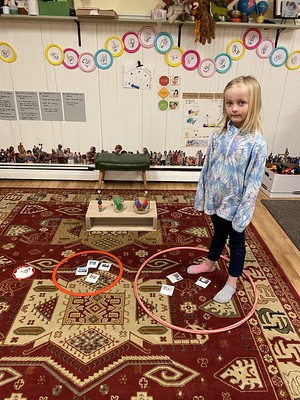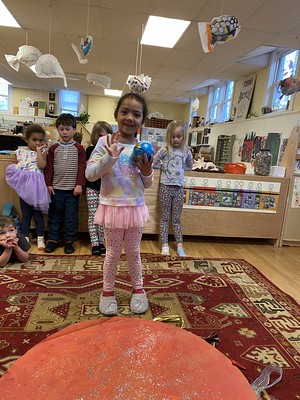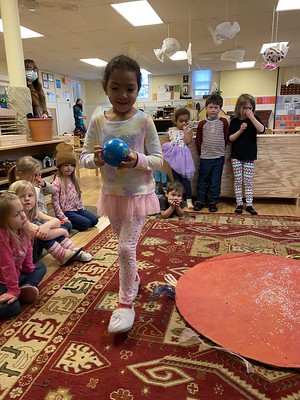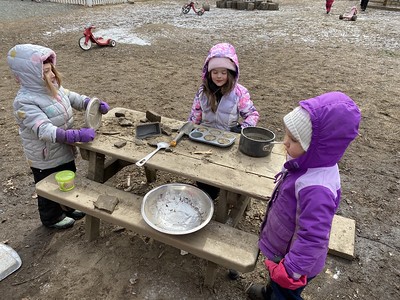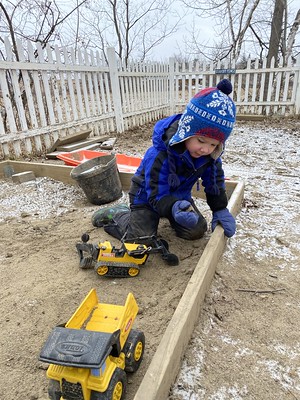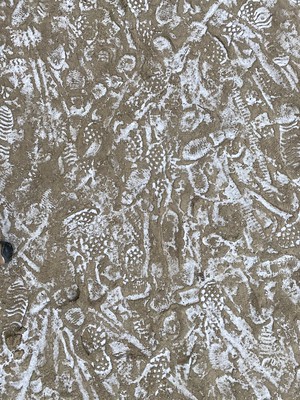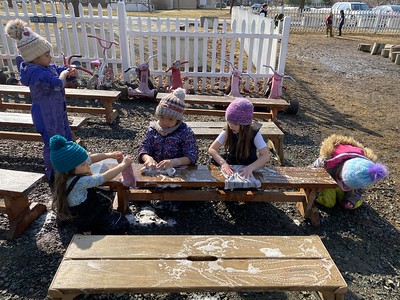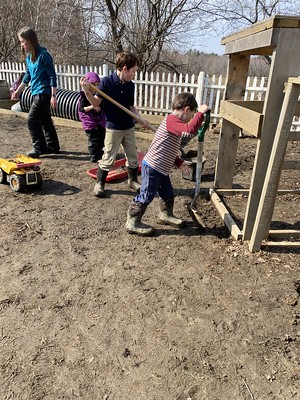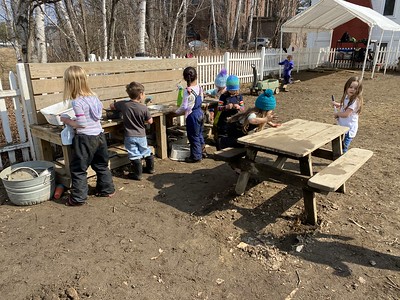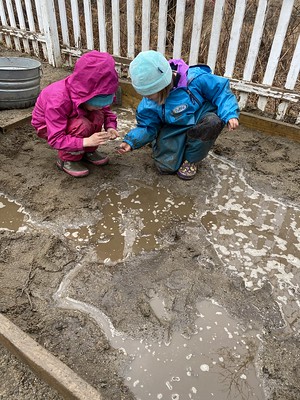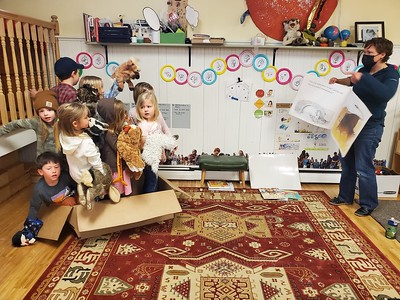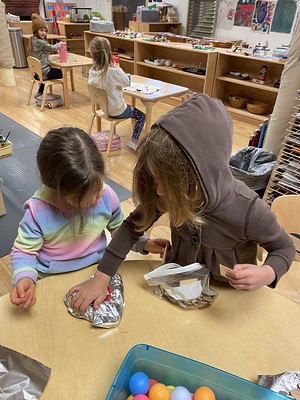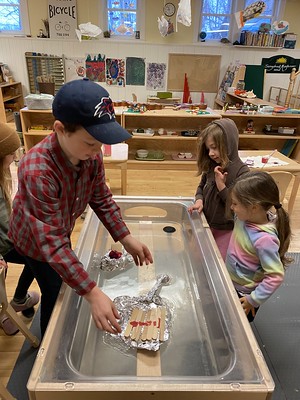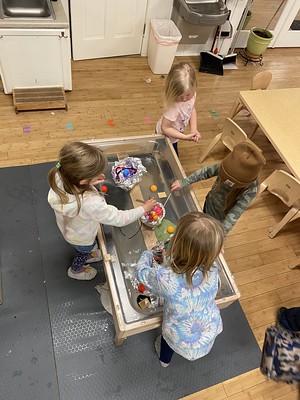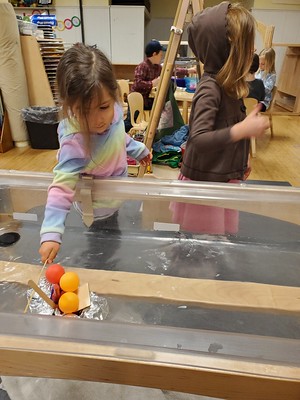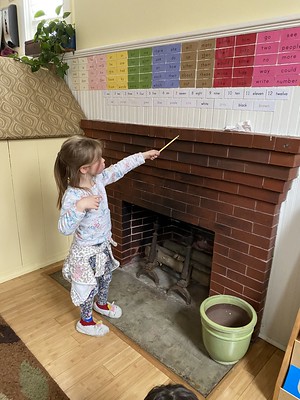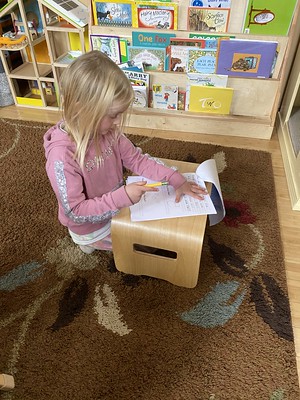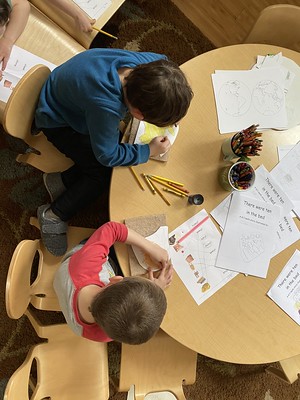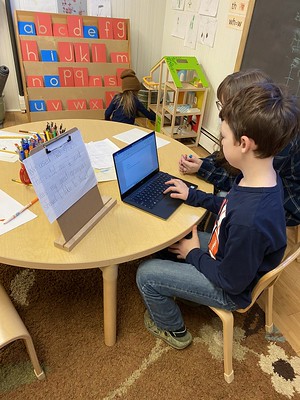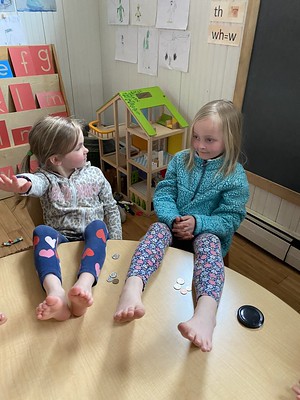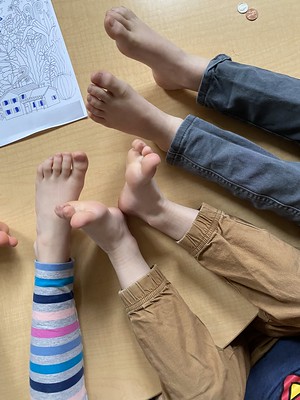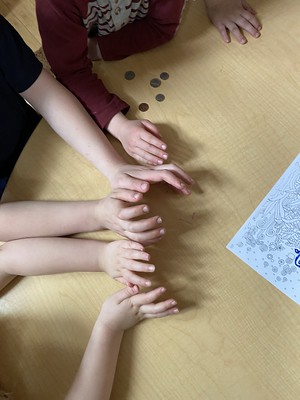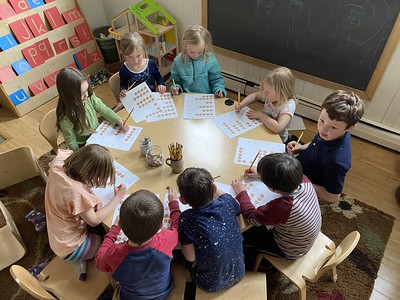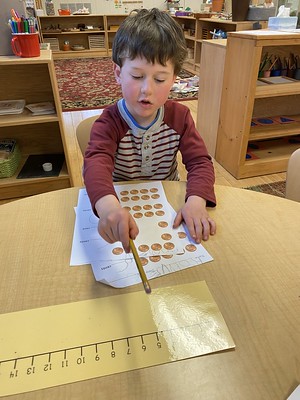The Seeds and Sunbeams students spent a frosty morning adventuring in the Town Forest with Michelle, Emily, Melissa, and guest teacher Gretchen. Guest teacher Gretchen led us into the woods to find a maple tree, which we identified by looking at the bark and leaves of the trees. She explained how the weather this time of year with warm days and nights that dip below freezing cause the sap in the trees to start flowing. The trees are tapped to collect sap which is then boiled for a long period of time to concentrate the sap into syrup. We learned that it takes 40 gallons of sap to make just one gallon of maple syrup! The children participated in an activity to mimic the flowing sap, and one to collect the sap from the buckets. The highlight of the lesson was getting to taste maple sap and syrup, which were both popular with all but a few children.
For art children created ocean scenes using watercolor paints, then drew, colored, cut out, and pasted ocean creatures to their underwater backgrounds.
Rose continued with name signing identification and recognition. She demonstrated how people who are deaf sign very, very quickly, so quickly that it is hard to see all the letters signed, so she taught us to look for particular letters that would help us distinguish between children with similarly spelled names. We practiced identifying the names that start with A, C, E, F, K, and L. We are getting good at reviewing water and water animal signs. We sang and signed Hurry, Hurry Drive the Firetruck and Tingalayo, then Rose read and signed the Gerald and Piggy story, I Love Slop. It was pretty funny!
We had a visit from Wolfgang and Henrietta. Henrietta told me all about all the things that she saw children doing in the classroom that they shouldn’t and I told her I didn’t think that I needed to know all of that, especially the “small stuff.” We asked the class what Henrietta (and the rest of us) could do when we observe situations that we feel might benefit from some intervention or a reminder. The children shared that for some things we could give a friendly reminder, but for others we need to get a teacher. We chatted about when to get a teacher’s help (safety situations – when someone or something is hurt or could potentially get hurt, or something is or could get broken), and when and how to give a friendly reminder. If we observe something like someone not packing up their snack, which does not need to be brought to a teacher, we can simply say, “Your snack is still out” then walk away – our job is done. It is never a student’s job to make sure someone follows the rules, but offering a friendly reminder is okay if you think someone has forgotten something.
We also chatted about the size of a problem and how to problem solve different scenarios. We read There’s a Bear in My Chair! then discussed how every day we all encounter a variety of problems. We probably manage a lot of small problems every day, and maybe a medium problem, but really big problems are pretty rare. We talked about how small problems may feel big, but they are things that we can manage, take a deep breath, and move on, while medium problems typically require help from an adult, and big problems may require emergency assistance. We put some small “problems” in a small cylinder, some medium “problems” in a medium cylinder, and a big “problem” in a big cylinder. We then took turns choosing a paper with a scenario and stepping into a small hoop for small problems, medium hoop for medium problems, and large hoop for big problems.
We celebrated a fifth birthday with the birthday girl. She told us the date of her birth, that she was born 5 years ago in the season of spring, and then proceeded to walk herself and the globe around the sun before sharing tasty chocolate cupcakes with buttercream frosting and sprinkles.
The weather called for a variety of outerwear, from single digit weather to the 60’s, from sunshine to pouring rain, it was quite the ride. Students built fairy and toad houses, scrubbed up the tables and benches, pulled out the balls for games of soccer and toss, created all types of mud meals, and began digging out around the house to create a place for a layer of wood chips as required by licensing to provide a padded surface for safety.
Friday scientists read Water is Water, Boats, How I Became a Pirate, and the acted our Mr. Gumpy’s Outing. We talked about which materials from our sink and float experiment floated; wood and some plastics, and sank; metal, glass, and rubber. The children then got busy building boats. They used aluminum foil, ping pong balls, wooden popsicle sticks, yarn, pipe cleaners, wax, and tape to assemble and test out a variety of boat shapes and materials. They even added flag poles and flags.
Kindergarten students have begun writing out their newspaper articles one on one with Lyn then typing them out. They have been reading, tracing, coloring, and pin punching their continents, learning how to read a clock, learning and reviewing all the names of the geometric solids, doing some writing, and were introduced to the ch sound and coin names and denominations.



